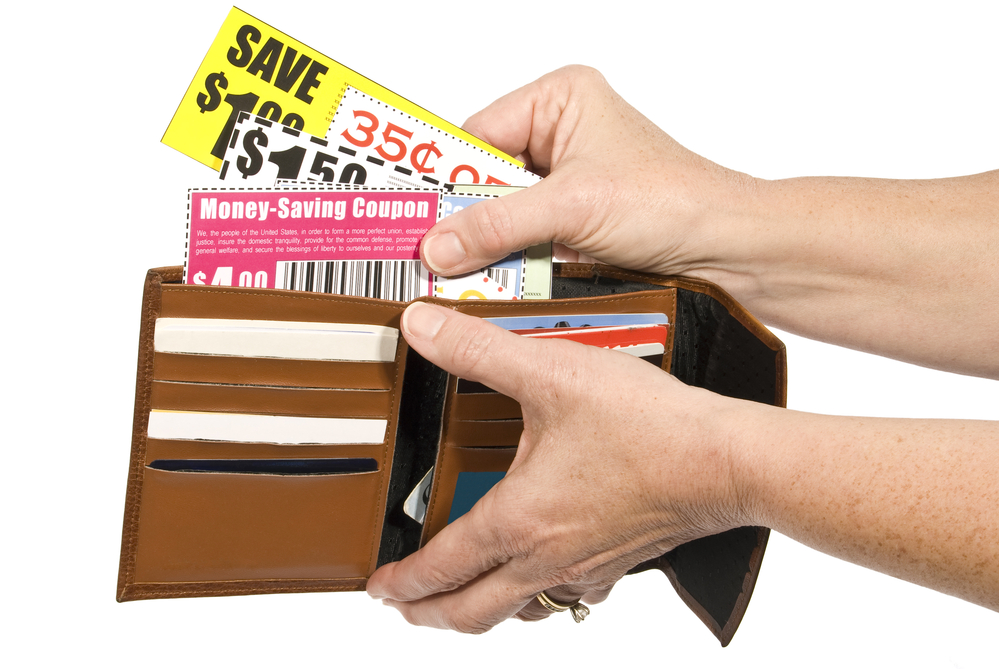Couponing can save you a lot of money on groceries. Those who know how to coupon properly can get cartloads of groceries for a fraction of the full retail price. But for the beginner couponer, this can seem like a daunting, time-consuming world.
So just how do you cultivate a lifestyle in couponing while saving yourself thousands? In this article, we’ll show you how to coupon while giving you some tips and tricks of the trade.
What are Online Coupons?
Online coupon codes are different from physical coupons in that they can be found online and then either printed out to use in a physical store or used when you do your online shopping.
Many online retailers offer set amounts off for new customers or when spending over a certain amount, and some also provide coupons for free shipping.
What are the Benefits of Using Coupons When Shopping?
There are many benefits to couponing. Below, we will detail just a few of the benefits you can get when using coupons the next time you shop.
- You can save money on a range of purchases both in-store and online
- You can get real cashback
- You can reduce your utility bills
- You can eat out for less
- You can save money on fuel
- You can look after your pet for less
- You can save money on delivery costs
What Do You Need to Start Couponing?

Couponing can be overwhelming, and if you’re going to dedicate the time to this task, you will need a few items to stay organized. Before you start couponing, we recommend getting your hands on the below items.
- A printer
- A laptop or phone to store online coupons
- A coupon and cashback app
- A plastic binder with labels and dividers
- Flyers from the stores you want to shop at
- Local newspapers and mail subscriptions
How to Start Couponing for Beginners?
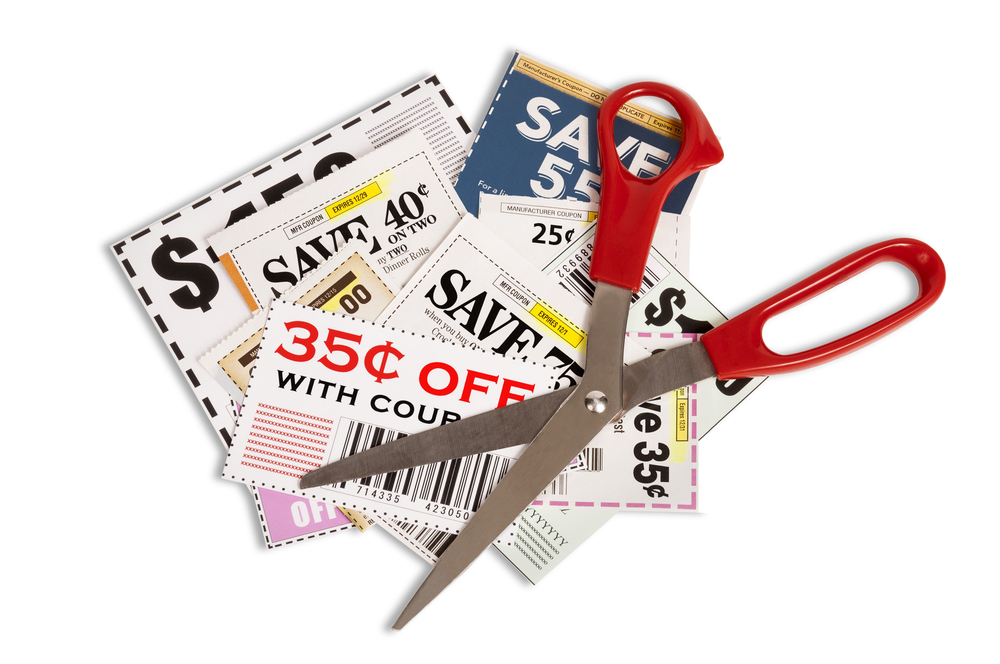
So now you have everything you need to start couponing, but just getting going can seem overwhelming. We recommend setting aside a specific time slot to focus on couponing where you won’t be distracted.
It will be a lot quicker and easier to coupon if you can give it your total concentration for one or two hours a week. The savings will be worth the time.
1. Understand the couponing basics and its goal
Before you start couponing, it’s essential to understand the basics and what you hope to achieve. A haphazard approach to couponing can be confusing, and you won’t end up reaping the rewards.
You’ll want to look for coupons that work for you in that they offer discounts or freebies on the products you usually buy at the stores you typically shop at.
As there are so many resources out there, we recommend you stick to local store flyers and community newspapers as well as your favorite online retails.
2. Know the types of coupons
As mentioned, there are several different types of coupons. Physical store coupons are generally found in newspapers or flyers and need to be cut out and presented at check out. Online coupons can either be used online or printed to redeem in-store.
Sometimes online coupons are presented by the retailer, whereas other times they come from the manufacturer directly and can be redeemed at various stores.
There are also cashback apps and websites to get cashback from when you link your purchases to your favorite online retailers.
3. Pin where you can find coupons
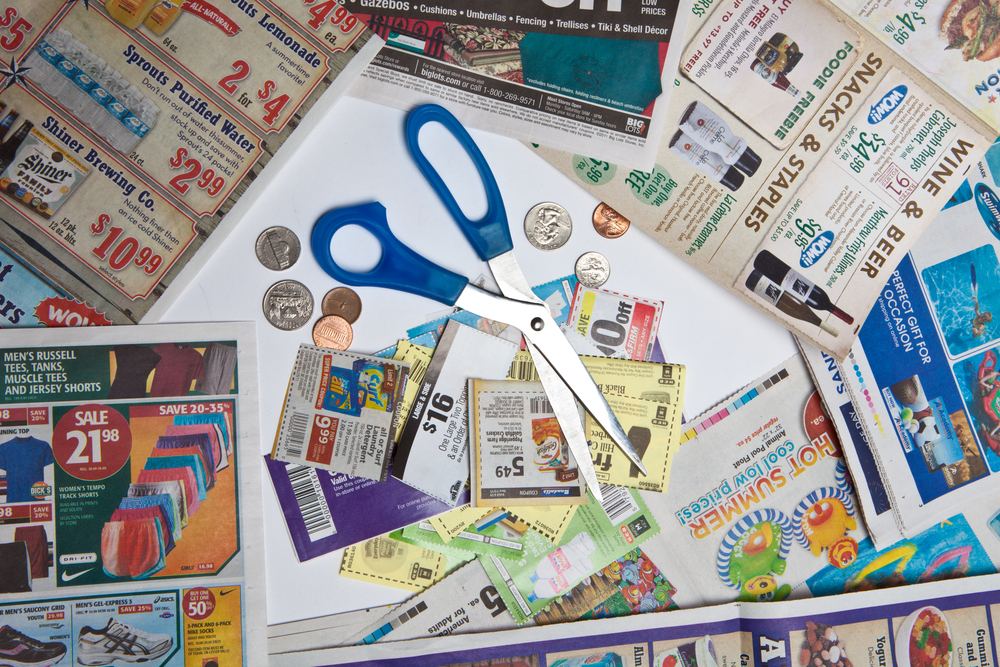
There are many places where you can start to look for coupons, and here are some of the best spots to get started.
- Local newspapers
- Magazines
- Weekly advertisements
- In-store flyers
- Coupon booklets
- Coupon printers in store
- Email newsletters
- In the store isles
- At the register
- On your till slips
- On the product packaging
- On store apps
- As part of a store club or card
- On manufacturer websites
- On couponing websites or apps
- On cashback websites or apps
- With a cashback credit card
4. Read and understand coupons
Before you get coupons, you need to properly educate yourself on reading and understanding coupons.
Most coupons have a header that indicates that they are either an in-store coupon or a manufacturer’s coupon, which you can redeem at any number of stores.
You’ll also see what you need to buy to redeem the coupon, as well as any indications of minimum spend or amount of products you need to purchase. Generally, a savings indication shows you how much money you will save or what you will get when using the coupon.
Then there is also typically an expiration date which states when the coupon needs to be used. Most coupons also have a code or barcode that the retailer will redeem your coupon.
5. Organize Your Coupons
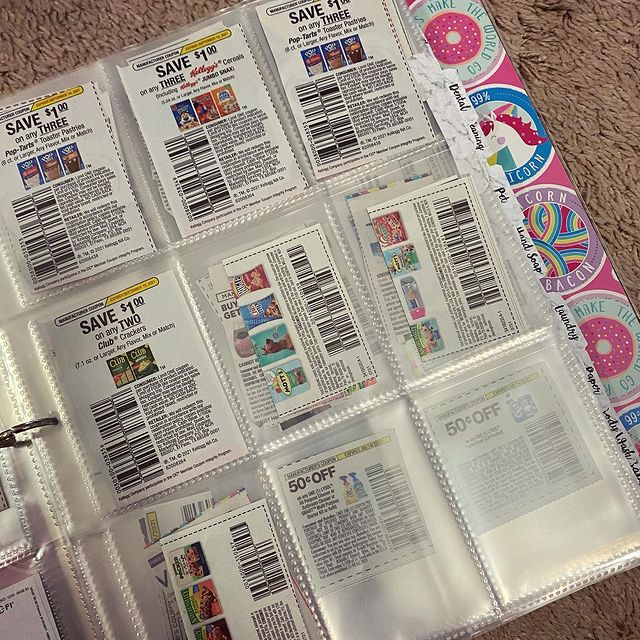
You want to stay organized when couponing to make sure that you can find the coupons you need when you need them. The best way to do this is by using a coupon binder.
Coupons can be organized by date of expiry, product, store, or all three, depending on how you intend to use them.
You can also use any number of couponing apps on your phone to help you organize digital copies of your coupons or any online coupons you have found.
6. Find a deal
To find the best deal, we recommend you only use coupons to buy things you usually buy anyway. If you’re going to purchase an item just because it has a coupon, you are not saving anything.
You should also check the brand of the product when making a purchase. Just because a specific brand has a coupon doesn’t mean there isn’t a competitor whose base price is cheaper.
If you find a coupon in a newspaper or magazine, don’t be afraid to grab a few. Even if you can only redeem one at a time, you can keep them for future visits.
You can also write to manufacturers of products you love to let them know about your experiences with their items. They may reward your efforts with a gift or a coupon for your next purchase.
7. Redeem coupons
Before you redeem your coupons, it’s crucial to know the terms and conditions of any coupon so that there are no surprises at the till.
Some coupons can be stacked, which means you can use more than one coupon on the same product, while others cannot be redeemed in conjunction with other coupons.
You also need to be sure of the offering before you redeem your coupons, as some coupons apply to multiple products purchased while others give cashback on specific items and others come with a gift or reward.
What are Common Couponing Issues?

Couponing does not come without its problems, and many coupon users experience these common hiccups.
- Some stores do not give cash back but offer in-store credit for future purchases.
- Some stores do not pay overages, and they may give store credit or require you to purchase other items.
- Some stores do not allow you to use two coupons simultaneously. This is particularly prevalent online.
- Sometimes you simply can’t find the product on the coupon
- Using coupons can delay the time you spend at checkout, and at some stores, you will only be allowed to use certain tellers who are set up for processing coupons
- Sometimes cashiers don’t accept your coupons, generally due to the terms and conditions not being read or understood fully
What are Store Coupon Policies?
It’s worth remembering that every store has its own policies about accepting coupons. As mentioned, some stores won’t accept multiple coupons on a single purchase, while others only have designated cashiers to honor coupons.
It’s worth reading up on your local store’s policies in this regard before you go shopping to avoid any embarrassment at the till.
What are other Money-Saving Strategies for Using Coupons?

When it comes to couponing, you can go from saving the odd dollar to getting full carts of groceries for almost free by powering up or doubling the value of your coupons. You could even get cashback with overages.
Keep reading to learn more about how to maximize your coupon savings.
What is Price Match Policy?
Some stores will allow you to price match, which means that they beat or match any price found at another store, provided the product and brand are the same. If you were to first price match and then apply a coupon, you can end up doubling your savings.
What is Coupon Overage?
Overage is what happens when your coupons together exceed the product’s value. This can occur if the store lets you stack coupons to use more than one coupon on a product.
What that means is that the store then owes you money. This is sometimes given in cash back to you, is deducted from the rest of your purchase, or is presented in the form of store credit for future purchases.
Coupon Stacking: Can You Combine Coupons?
Depending on the store policy, some places allow coupon stacking. That means you can combine a manufacturer’s coupon and a store coupon to double your savings.
If you plan on coupon stacking, be sure to check the fine details and terms and conditions to make sure this is allowed before simply trying your luck at the till.
What are Double and Triple Coupon Days?
Certain stores do special double and triple coupon days. On these special days, the store will double or triple the value of your coupon. So a $1 saving suddenly becomes a $2 or $3 saving.
It is thus worth checking if your store does these days and if you can save up your coupons and essential purchases to maximize your returns.
Should You Consider Cashback?
Cashback is another way to save money. Sign up on a free cashback website, and you’ll get cashback when you shop online at popular retail outlets. Some apps even allow you to get cashback in retail stores when you upload a copy of your receipt.
A cashback credit card is another way to get money back, and you can just use it to shop for your everyday purchases without the hassle of linking to a website or an app.
Just be careful of using it as a credit card, as you will then start incurring interest charges, negating the whole point of getting cash back.
Frequently Asked Questions on Couponing
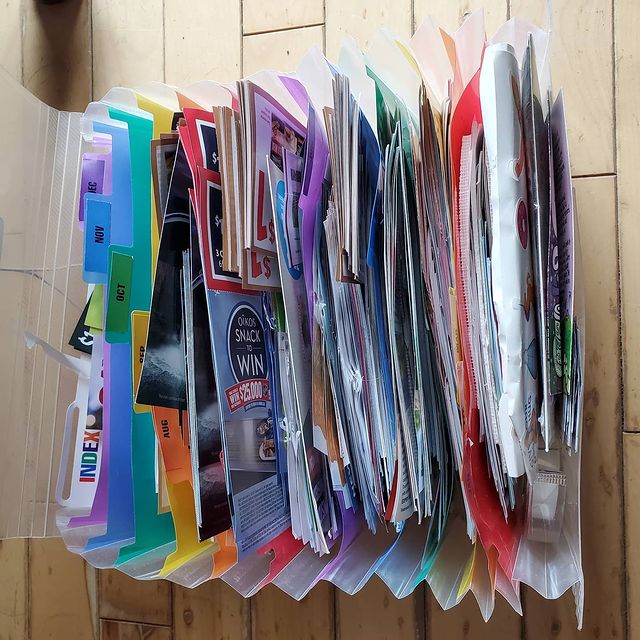
Can you use more than one coupon per item?
Yes, coupon stacking allows you to use more than one coupon on a single item. As every store and coupon is different, you will need to check the specific terms and conditions on the coupon you want to use to see if this is possible.
What does “limit one coupon per purchase” mean?
If your coupon has the below disclaimer, then it means that you can only use one coupon on a particular item. This essentially means that you cannot try and coupon stack on that item.
What does it mean when a coupon says “limit one coupon per purchase per transaction”?
If a coupon features the above term, you can only use one coupon on your entire purchase. If you wanted to use multiple coupons, you would need to do multiple transactions. This type of term is typically applied online.
Are there Coupon Master Classes?
Yes, some pro shoppers and coupon gurus offer coupon master classes.
Before you attend one of these classes, we recommend you try playing around by yourself first so that you can master the basics of couponing. After that, you can get helpful tips and tricks from the pros on how to take your couponing savings to the next level.
What are Couponing Tips to Live By?
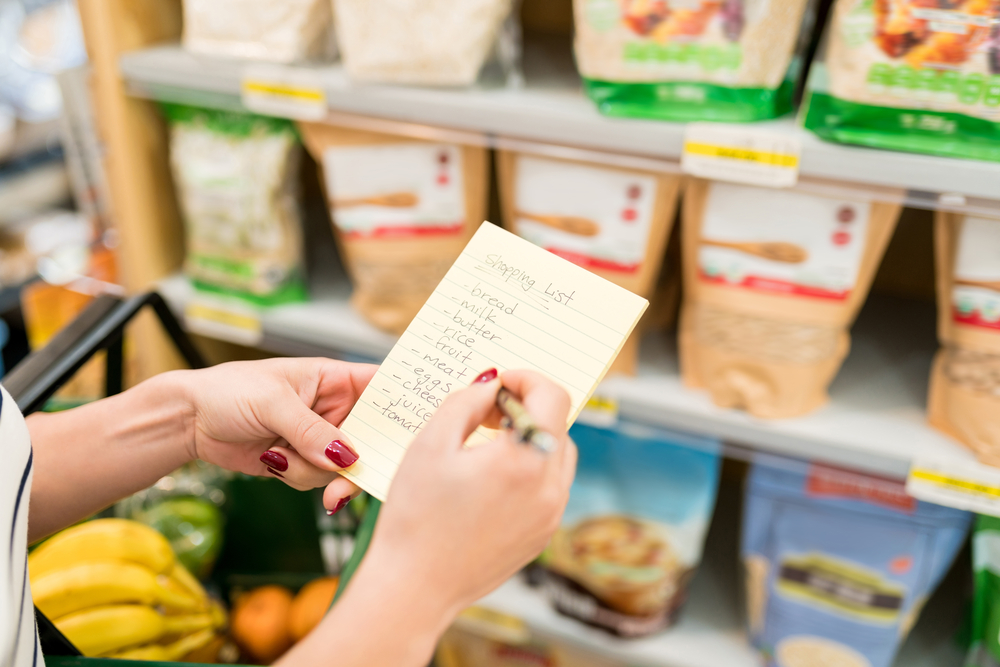
So, you’re ready to get couponing, but what are the essential tips and tricks you need to live by to make sure your couponing experience is a pleasant one, and you can maximize your savings?
- Set aside time to coupon each week: Take time to check your mails, newspapers, and online for coupons regularly. This will ensure you don’t miss anything.
- Plan your purchases: Keep your coupons well organized, know what you can purchase in bulk, and stock up on in advance to maximize your savings. Also, keep a keen eye on your coupon expiry dates, so you don’t try and use a coupon too late.
- Schedule your shopping trip in advance: Know what you need to get, how many coupons you plan to use on that item, and if you need to do different transactions at the till. Having everything handy and well organized will help minimize any headaches for yourself, the teller, and the customers in the queue behind you.
- Make a shopping list: As we’ve mentioned, couponing is much easier when organized. Before you go shopping, make sure that you make a list of what you want to get and the coupons you plan to use for each item. If you’re trying to match up products and coupons in the store, you will only end up confused and stressed.
- Only use coupons you need: A sure-fire way to spend more money than you save is to buy things you normally wouldn’t do just because of a coupon on that item. Always ask yourself if you would purchase this product regardless of the coupon and if that isn’t the case, give it a skip.
- Master one store at a time: If you are a beginner just starting in the world of couponing, try and master one store at a time. Start collecting coupons for your local grocery store and use this as your base to build your couponing skills and knowledge before overcomplicating things.
- Aim for 40% off: If you do couponing right, you can get about 40% off your items. To do this, try and use your coupon only once the product is at the lowest price. For this, you will need to monitor your store’s prices regularly and know when the items you want to hit their best price.
- Create a stockpile: If you find a terrific coupon for an item you buy regularly, try and create a stock. This way, you get to dictate what you want to pay rather than just buying an item when you need it at the store. Good items to stockpile include household essentials and non-perishables like toothpaste, dishwashing liquid, and toilet paper.
- Track your savings: You must track your savings to see if the time and effort you are putting in is worth the savings. If your savings don’t match what you could potentially be earning if you did some work over that time, then your couponing efforts aren’t worth it.
So, Should You Start Couponing?

As you can see, you can save real money by doing couponing properly. While it may seem like a daunting task, you don’t need to be an extreme couponer right off the bat.
Start small, using coupons to save on items you would have bought at your local grocery store anyway.
To save money, try and avoid purchasing items you don’t need, and be sure to keep your coupons well organized.
Do you coupon? Let us know in the comments below your tips and tricks for making the most of your savings.

